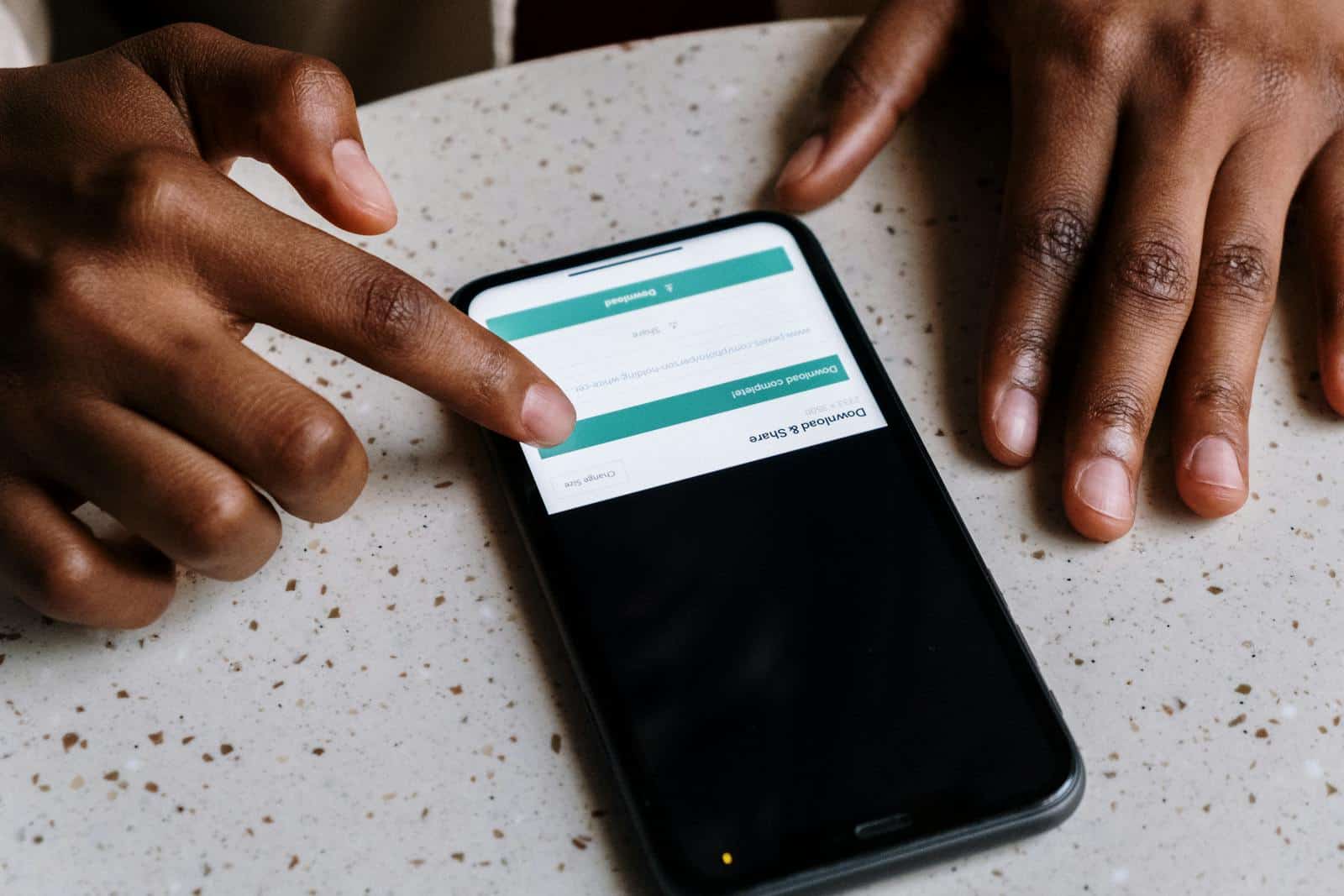Lead magnets are essential tools in the world of B2B sales, acting as a bridge between potential customers and your business. They serve as enticing offers that encourage prospects to share their contact information, allowing you to build a valuable database of leads. By providing something of value upfront, you create a sense of trust and establish your authority in your industry. This initial interaction can set the stage for a fruitful relationship, making lead magnets a cornerstone of effective sales strategies.
When you think about lead magnets, consider them as the first step in a journey. They are not just about collecting emails; they are about engaging with your audience and addressing their needs. A well-crafted lead magnet can significantly increase your conversion rates, turning casual visitors into interested prospects. By understanding the power of these tools, you can harness their potential to drive your B2B sales efforts forward.
Stay Sharp! Subscribe for more free tips and resources >
Key Takeaways
- Lead magnets are powerful tools in B2B sales for attracting and converting quality leads.
- Identifying your target audience and understanding their pain points is crucial for creating effective lead magnets.
- Compelling and valuable lead magnets can include whitepapers, case studies, webinars, and free trials.
- Leveraging different types of lead magnets, such as ebooks, templates, and checklists, can cater to different audience preferences.
- Promoting lead magnets through targeted channels and nurturing leads with effective follow-up strategies is essential for B2B sales success.
Identifying Your Target Audience and Their Pain Points
Identifying Your Ideal Clients
To create effective lead magnets, you first need to identify your target audience. This involves understanding who they are, what industries they belong to, and what specific challenges they face. By conducting thorough market research and analyzing customer data, you can gain insights into the demographics and behaviors of your ideal clients. Teracore loves Hubdoc’s ‘Make my Persona’ free online tool, for helping you to define your audiences.
Tailoring Your Lead Magnets
This knowledge will help you tailor your lead magnets to resonate with their needs and preferences. Once you have a clear picture of your audience, it’s crucial to delve deeper into their pain points. What keeps them up at night? What obstacles do they encounter in their daily operations?
Positioning Your Offerings as Solutions
By addressing these issues directly in your lead magnets, you can position your offerings as solutions. This enhances the value of your lead magnets and demonstrates that you understand your audience’s struggles, fostering a stronger connection, right from the start.
Creating Compelling and Valuable Lead Magnets

Creating compelling lead magnets requires a blend of creativity and strategic thinking. Start by brainstorming ideas that align with your audience’s interests and pain points. Whether it’s an informative eBook, a practical checklist, or an engaging webinar, the key is to offer something that provides real value. Your lead magnet should be designed to educate, inform, or solve a problem for your audience, making it irresistible for them to sign up.
In addition, presentation matters. A visually appealing lead magnet can capture attention and enhance the perceived value of your offer. Invest time in designing an attractive layout. Use engaging visuals that complement your content.
Remember, the goal is to create a lead magnet that delivers valuable information and reflects the professionalism of your brand. When prospects see the effort you’ve put into your lead magnet, they are more likely to trust you and engage further.
Stay Sharp! Subscribe for more free tips and resources >
Leveraging Different Types of Lead Magnets for B2B Sales
| Lead Magnet Type | Conversion Rate | Number of Leads Generated | Qualified Leads Percentage |
|---|---|---|---|
| Whitepaper | 12% | 350 | 25% |
| Webinar | 18% | 500 | 30% |
| Case Study | 15% | 400 | 28% |
| Ebook | 10% | 300 | 20% |
There are various types of lead magnets you can leverage to attract potential clients in the B2B space. Each type serves a unique purpose and can appeal to different segments of your audience.
For instance, whitepapers and case studies are excellent for showcasing your expertise and providing in-depth analysis on industry trends or successful projects. These formats are particularly appealing to decision-makers who appreciate detailed information before making purchasing decisions.
On the other hand, interactive tools like quizzes or games can engage users in a fun way while delivering valuable insights. These types of lead magnets encourage participation and can provide personalized results that resonate with users’ specific situations.
By diversifying the types of lead magnets you offer, you can cater to various preferences within your target audience, increasing the likelihood of capturing quality leads.
Promoting Your Lead Magnets to Attract Quality Leads
Once you’ve created your lead magnets, the next step is promotion. Simply having a great lead magnet isn’t enough; you need to actively share it with your target audience. Utilize multiple channels to reach potential leads effectively.
Social media platforms are excellent for sharing snippets or highlights from your lead magnets, enticing users to click through for more information. Consider using paid advertising to boost visibility and reach a broader audience.
Email marketing is another powerful tool for promoting your lead magnets. If you already have a list of subscribers, send out targeted campaigns highlighting the benefits of your lead magnets. Craft compelling subject lines and engaging content that encourages recipients to take action. Consider collaborating with industry influencers or partners who can help amplify your reach by sharing your lead magnets with their audiences.
Nurturing and Converting Leads with Effective Follow-Up Strategies

Building a Relationship Through Personalized Content
This could include sending additional resources related to the topic of the lead magnet, or offering personalized recommendations based on their interests. The goal is to build a relationship and guide them through the sales funnel.
Segmenting Leads for Effective Follow-up
Effective follow-up strategies also involve segmenting your leads based on their behavior and engagement levels. By understanding how they interact with your content, you can tailor your communication accordingly.
Personalized Approach for Enhanced Conversion
For instance, if a lead shows interest in a specific service or product, provide them with case studies or testimonials that highlight its benefits. This personalized approach enhances the chances of conversion and reinforces the value you bring to their business.
Stay Sharp! Subscribe for more free tips and resources >
Measuring the Success of Your Lead Magnets in B2B Sales
For your lead magnets to be effective, you must measure their success regularly. Start by tracking key performance indicators (KPIs) such as download rates, conversion rates, and engagement levels. Analyzing this data will give you insights into what’s working and what needs improvement. For example, if a particular lead magnet has a high download rate but low conversion rate, it may indicate that while people find it valuable, it may not be effectively leading them toward making a purchase.
Consider gathering feedback from leads who have engaged with your content. Surveys or follow-up emails can provide valuable insights into how well your lead magnets resonate with your audience.
This feedback loop will help you refine your approach and make informed decisions about future lead magnet creation.
Optimizing and Iterating Your Lead Magnets for Continuous Improvement
The final step in maximizing the effectiveness of your lead magnets is optimization and iteration. Based on the data and feedback you’ve collected, identify areas for improvement and make necessary adjustments. This could involve updating content to reflect new industry trends, or enhancing visuals for better engagement.
Remember that what works today may not work tomorrow; staying adaptable is key. Regularly revisiting and refreshing your lead magnets ensures they remain relevant and valuable to your audience. Consider A/B testing different versions of your lead magnets to see which performs better for engagement and conversion rates.
By continuously optimizing your offerings, you improve their effectiveness and demonstrate a commitment to providing ongoing value to your leads.
Conclusion
Mastering the art of lead magnets in B2B sales involves understanding their power, identifying target audiences, creating compelling content, promoting effectively, nurturing leads, measuring success, and continuously optimizing for improvement. By following these steps, you can enhance your sales strategy and build lasting relationships with potential clients.
If you’re interested in learning more about how AI is impacting content creation, check out this fascinating article written by an AI. It’s amazing to see how technology is changing the way we approach marketing strategies
If you’re looking to enhance your website’s security, be sure to read these 7 WordPress security hardening tips.
Or, for a fun break, why not check out Steve’s web games here?
Subscribe for free tips, tools and resources >
FAQs
What is a B2B lead magnet?
A B2B lead magnet is a marketing tool used to attract potential business customers by offering them valuable content or resources in exchange for their contact information. This allows businesses to generate leads and build their email list.
What are some examples of B2B lead magnets?
Some examples of B2B lead magnets include ebooks, whitepapers, case studies, webinars, templates, checklists, free trials, and product demos. These resources are designed to provide value to potential customers and entice them to provide their contact information.
How do B2B lead magnets work?
B2B lead magnets work by offering valuable content or resources to potential business customers in exchange for their contact information, typically their email address. Once the contact information is obtained, businesses can then nurture these leads through targeted marketing efforts.
Why are B2B lead magnets important for businesses?
B2B lead magnets are important for businesses because they help in generating high-quality leads, building an email list, and nurturing potential customers. They also help in establishing thought leadership and credibility in the industry.
How can businesses create effective B2B lead magnets?
Businesses can create effective B2B lead magnets by understanding their target audience’s pain points and offering valuable solutions through their lead magnets. They should also focus on creating high-quality, well-designed content that is relevant to their target market. Additionally, businesses should promote their lead magnets through various marketing channels to maximize their reach.



